The marble village of Dhi... A tourist place you will not regret visiting
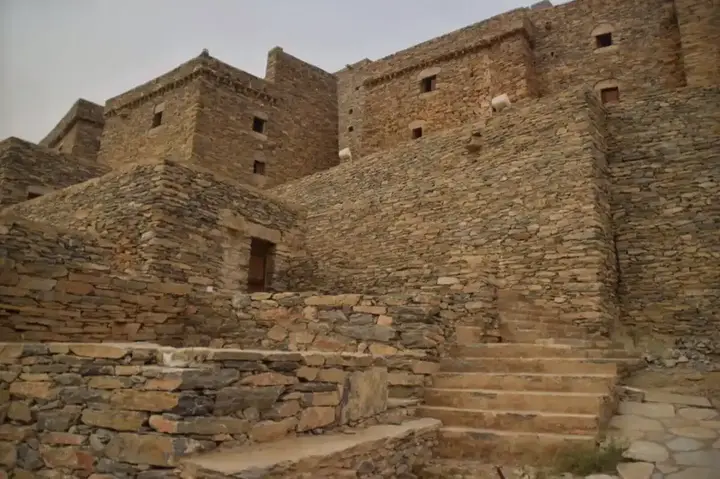
No matter how many tourist villages there are, Dhi Ain will remain one of the most, if not the most, distinguished villages. At an altitude of 2,000 meters above sea level, it has preserved its history and heritage over the years, with more than 400 years old. It is also characterized by the spring of water in it, which was the reason for naming the village of Dhi Ain by this name, as this spring flows water from the neighboring mountains without interruption and flows into several places, as each estuary has its own name.
Show key points
- Dhi Ain village, located at an altitude of 2,000 meters in Al-Baha, Saudi Arabia, has preserved its historical and cultural heritage for over 400 years.
- The village is renowned for its continuously flowing freshwater spring, which is the origin of its name and supports abundant agriculture and life.
- Architecturally, Dhi Ain resembles a single fortress with 49 adjacent houses made from volcanic rock and mud bricks, blending harmoniously with the mountainous terrain.
- ADVERTISEMENT
- Historically, Dhi Ain witnessed tribal battles, including a notable conflict with the Turkish army, prior to the unification of the Kingdom by King Abdul Aziz Al Saud.
- It is a significant tourist attraction offering scenic views, parking, family areas, and other visitor facilities, especially popular during winter and evening hours in summer.
- The village's strategic placement on a white rocky mountain offers stunning natural surroundings and overlooks Wadi Rush to the west.
- Residents continue traditional practices to maintain the spring and irrigation channels, ensuring clean water reaches crops like bananas, basil, and palm trees.
The location and story of the village of Dhi Ain
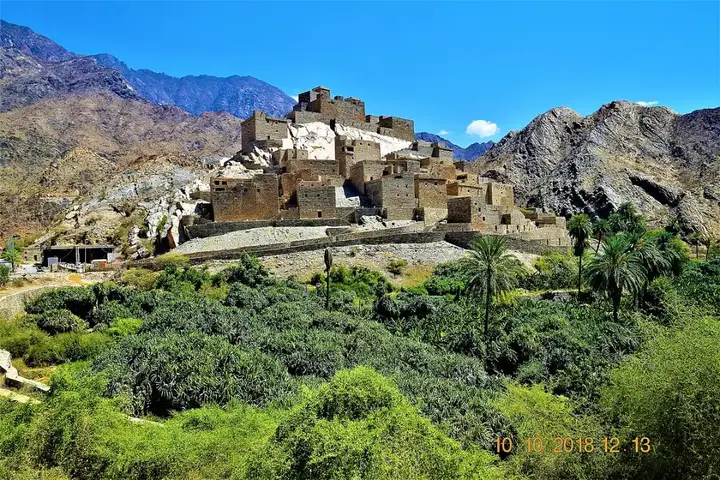
The village of Dhi Ain in the Kingdom of Saudi Arabia is located in the province of Qalwah in the Al-Baha region, 7 kilometers south of Dhi Khadra Valley, and 25 kilometers from the center of Al-Baha city. In addition, it is also located on the slope of King Fahd Aqaba Road. As for the story of the discovery of the village of Dhi Ain, it was narrated that a man lost his stick in a valley, and followed the course of water in the valley until he reached the village known as the village of Dhi Ain today. There he gathered its inhabitants, and dug a spring in the shape of an eye to recover his staff. The village of Dhi Ain dates back to the tenth century AH (eighth century AD), and witnessed many tribal battles before the unification of the Kingdom thanks to King Abdul Aziz Al Saud. Among these battles is a battle with the Turkish army led by Muhammad Ali Pasha.
Recommend
Architectural character of the village
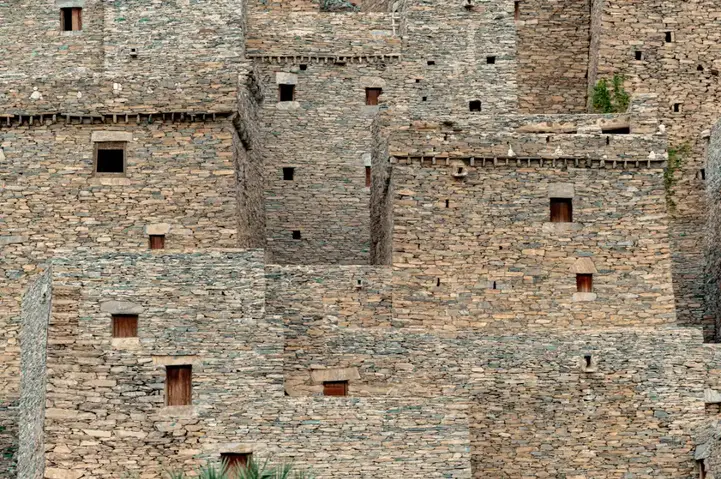
When you see the village of Dhi Ain from outside, it looks like a single castle, and this is because its houses are designed to be adjacent to each other in a pyramidal manner that is homogeneous with the mountainous environment in which the village of Dhi Ain was built. The village of Dhi Ain contains 49 houses, including:
• 9 single-storey structures
• 19 Two-storey
• 11 with three floors
• 10 with four floors
These dwellings were built of mud bricks and volcanic rocks and were fixed with mud, and Sidr wood was used to build some of the roofs of these buildings. There is also a mosque in the village of Dhi Ain in addition to a large fort that was previously used to defend and protect the village.
Features of the village
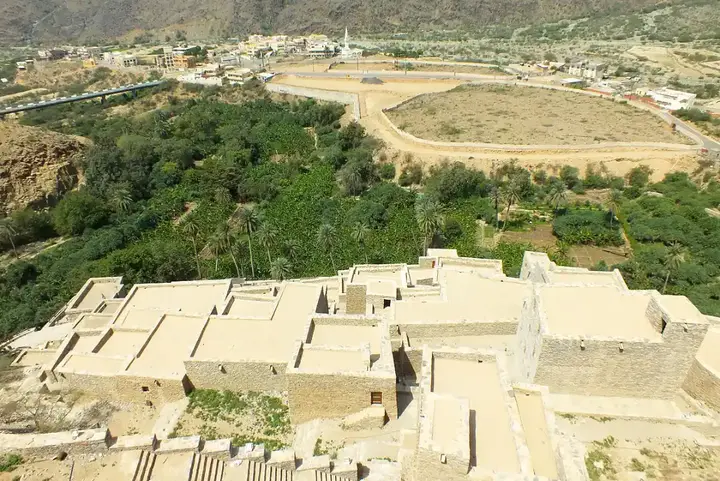
• Tourist destination: The village of Dhi Ain receives tourists from 7 am to 6 pm and is preferred to visit in winter or evening times in summer. Its location is full of tourist attractions, as it has parking and a park, seating areas for families, toilets, and many other features.
• Strategic location: The village of Dhi Ain is located on the top of a mountain with rugged terrain, this mountain is rocky in nature and white in color, and its height is more than 800 meters above sea level, and the village of Dhi Ain is surrounded by mountains and picturesque nature from all sides, and the village overlooks Wadi Rush in the west.
• Abundance of water: Thanks to the spring of water located under the mountainside where the village of Dhi Ain was built, the water is characterized by its abundance and uninterruption. Moreover, the village is famous for growing many crops such as fruits, kaddi, basil, palms, bananas and lemons, and its inhabitants used to drink from its pure water.
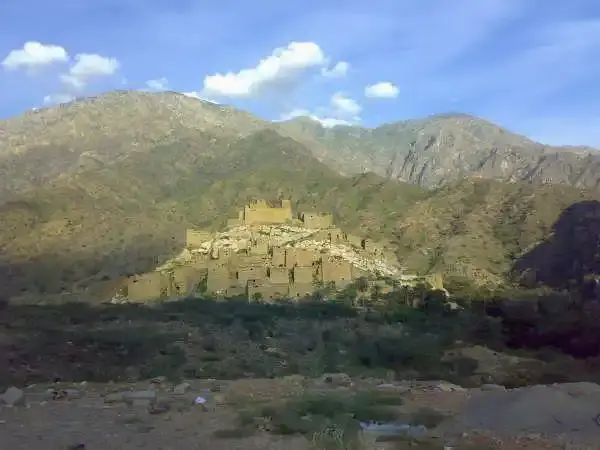
Yahya Nasser, who is interested in the history of the village of Dhi Ain and one of its sons, explains about water and its abundance that: "The ancient people of the village depend through fresh water on the irrigation of palm trees and wheat farms, but at the present time it produces bananas, basil and kadi, through the customs and traditions inherited by parents and grandparents, we clean the so-called (oligo), which is the point of the spring of the eye, where the people gather in the early morning or after the afternoon prayer, and they take out what happened to the eye like dust sand and tree roots, in addition to cleaning the path and stream of water leading to the waterfall and farms. The villagers still maintain the "ta'b", which is the process of tracking water from the spring of al-Ain, passing through its course and cleaning it from tree leaf residues, especially in the autumn, to the farms.








